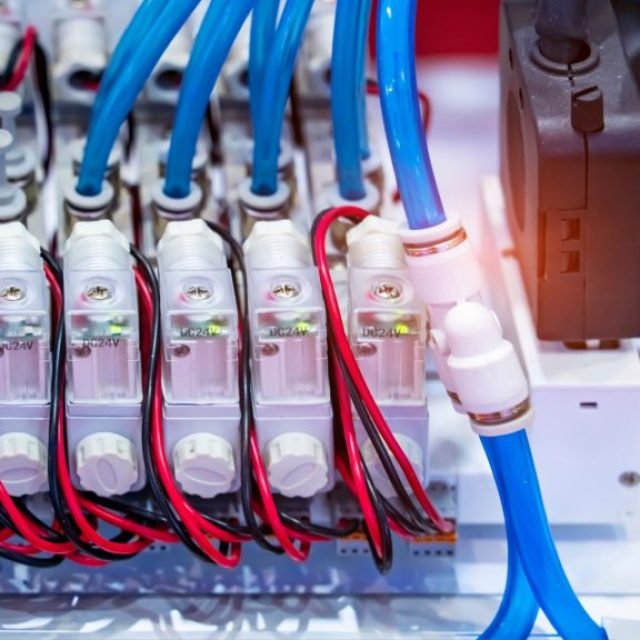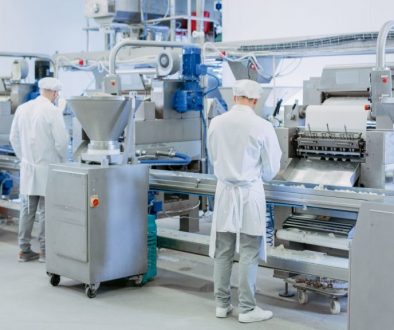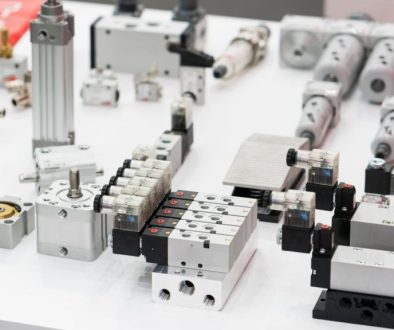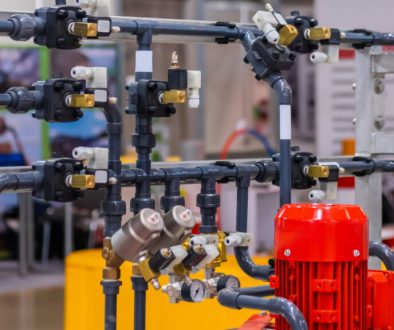How Mass Flow Controllers Work
How Mass flow controllers work, well they are the unsung heroes of many industrial processes, working tirelessly behind the scenes to ensure precise control and measurement of gas flow rates. Just as a traffic controller manages the flow of vehicles to keep things running smoothly, mass flow controllers regulate the flow of gases to optimize efficiency and maintain product quality in sectors ranging from semiconductor manufacturing to biotechnology.
Key Uses:
Mass flow controllers are like the Swiss Army knives of many industries, with a wide range of applications that all rely on their ability to precisely measure and control gas flow. In semiconductor manufacturing, they’re essential for delivering the exact amounts of process gases needed to create intricate microchips, like using a fine-tipped brush to paint detailed patterns. Bioprocessing also heavily depends on mass flow controllers to maintain the ideal environment for cells in bioreactors, similar to adjusting the temperature and humidity in a greenhouse to help plants grow.
But the versatility of mass flow controllers doesn’t stop there. They play a key role in other fields like gas chromatography, where they ensure accurate analysis by controlling carrier gas flow, much like a steady stream of water carries leaves down a river. In the energy sector, mass flow controllers help optimize fuel cell efficiency by regulating hydrogen and oxygen flow, like a carburetor mixing air and fuel in an engine. Even medical devices like ventilators and anesthesia machines rely on mass flow controllers to deliver the right amounts of air and oxygen to patients, like a conductor keeping an orchestra in perfect time. Across diverse industries, these small but mighty devices work tirelessly behind the scenes to enable countless products and processes that we often take for granted.
Applications in Semiconductor Manufacturing:
In the world of semiconductor manufacturing, mass flow controllers are like the conductors of an orchestra, ensuring that all the gases flow in perfect harmony. These devices are critical for delivering the precise amounts of gases needed to create the intricate patterns on microchips. It’s like using a very precise measuring cup to add just the right amount of each ingredient when baking a cake. Even the slightest variation in gas flow can affect the quality of the final product. As semiconductors become more advanced, mass flow controllers must meet increasingly strict requirements, providing excellent accuracy, reliability, and fast response times to support the latest chip-making technologies. They allow manufacturers to fine-tune recipes, quickly switch between different gases, and maintain consistent results, much like a chef adjusting the flavors in a dish to get it just right. Without mass flow controllers, the complex “cooking” process of semiconductor manufacturing would be nearly impossible.
Thermal Dispersion vs. Differential Pressure Methods:
Thermal dispersion and differential pressure are two common methods used to measure gas flow, but they work in very different ways. Thermal dispersion is like using your hand to feel the wind – the more heat the gas absorbs from a heated sensor, the higher the flow rate. In contrast, differential pressure methods are more like gauging wind speed by watching leaves rustle on a tree. They measure the pressure drop across a constriction, which increases with flow velocity. While differential pressure requires periodic calibration checks, thermal dispersion directly measures mass flow without the need for additional calculations.Thermal devices also typically cause less pressure drop and can handle a wider flow range with good accuracy compared to differential pressure. So while both have their place, thermal dispersion offers some unique advantages in many gas flow applications.
Role in Bioprocessing Systems:
In bioprocessing, mass flow controllers are like the air traffic controllers of bioreactors, carefully managing the flow of gases to keep the cells inside happy and productive. Just as we need the right balance of oxygen and carbon dioxide to breathe comfortably, cells in a bioreactor require precise control of dissolved oxygen and pH levels to grow and make valuable products like medicines. Mass flow controllers fine-tune the delivery of air, oxygen, nitrogen, and carbon dioxide, much like adjusting the knobs on a stove to get the perfect simmer. By maintaining an ideal environment, they help the cells thrive while preventing harmful byproducts from building up, similar to opening a window to let in fresh air. With the ability to switch gases on the fly and generate useful data, modern “smart” mass flow controllers give bioprocess engineers even greater control and insight, like having a high-tech assistant to monitor and optimize the cell culture “kitchen.”
Custom Pneumatic Solutions:
Kelly Pneumatics is like a tailor for gas flow control, creating custom-fitted solutions for each client’s unique needs. Just as a tailor takes precise measurements and selects the perfect fabric to craft a bespoke suit, Kelly Pneumatics works closely with customers to design and manufacture valves, regulators, and control products that are tailored to their specific applications.] With over two decades of experience and a team of skilled engineers, they have the expertise to tackle even the most challenging projects, much like a master tailor handling the most intricate designs. By using high-quality materials and advanced technology, such as their patented proportional valves, Kelly Pneumatics ensures that each custom solution performs flawlessly, like a perfectly fitted garment. From medical devices to alternative energy systems, they take pride in delivering superior products that are designed and built entirely in the USA, just as a local tailor takes pride in their craftsmanship.




